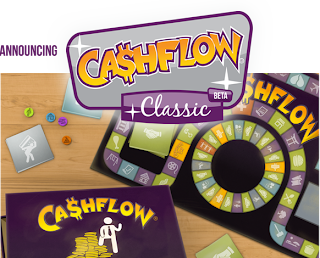I wondered why there is no tax break for saving money. But when I was reading the book I bought, the "Rich Dad's Cashflow Quadrant" written by Robert Kiyosaki, my question was being answered.
I have read the explanations on page 134 to 136 of the book, and I decided to share it to you. Here's how Robert explained it:
Robert Kiyosaki: If you notice, you get a tax break for buying a house and going into debt, but you don't get a tax break for saving money. Have you ever wondered why?
I'm not sure either, but I imagine that one big reason is because your savings are a liability to banks. Why would they ask the government to pass a law that would encourage you to put even more money in their banks, money that is a liability to them.
They Don't Need Your Savings
Besides, banks really don't need your savings. They don't need much in deposits because they can magnify money at least 10 times. If you put $1 in the bank, by law, the bank can lend out $10 and, depending upon the reserve limits imposed by the central bank, possibly much more. That means your single $1 suddenly becomes $10 or more. It's like magic! When my rich dad showed me that, I fell in love with the idea. At that point, I knew that I wanted to own a bank and not go to school to become a banker.
On top of that, the bank may pay less than one percent interest on that one dollar. In better economic times, it could be five percent and you, as a consumer, would feel secure because the bank is paying you something on your money. Banks see this as good customer relations because, if you have savings with them, you may come in and borrow money too. They want you to do this because they can then charge nine percent or more on what you borrow. While you may make less than one percent on your $1, the bank can make nine percent or more on the $10 of debt your single dollar has generated. Recently, I received a new credit-card offer that advertised 8.9 percent interest. But since I understood the legal jargon in the fine print, I saw it was really 23 percent. Needless to say, I took a pass.
They Get Your Savings Anyway
The other reason they don't offer a tax break for savings is more obvious. If you can read the numbers and see which way the cash is flowing, you'll notice that they'll get your savings anyway. The money you could be saving in your asset column is flowing instead out of your liability column in the form of interest payments on your mortgage. This ends up in the bank's asset column. The cash-flow pattern looks like this:
That's why they don't need the government to give you a tax incentive to save. They'll get your savings anyway in the form of interest payments on debt.
Politicians aren't about to mess with the system banks, insurance companies, building industry, brokerage houses, and others contribute a lot of money to their campaigns, and the politicians know the name of the game.
Source: Rich Dad's Cashflow Quadrant Pages 134,135 & 136
Buy related resources on Amazon:
Buy related resources on Amazon:
Time is Money














